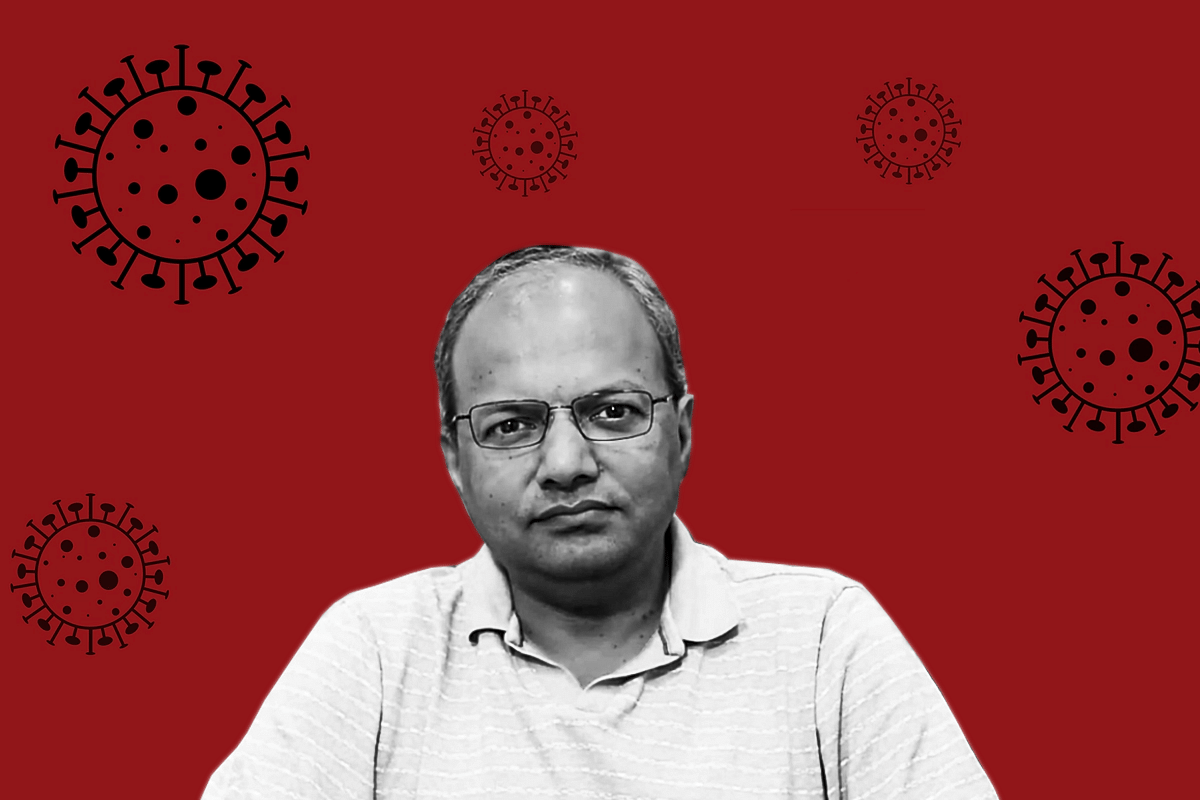News Brief
When Is The Peak? When Is The End? What IIT-Kanpur's Manindra Agrawal Says About Third Wave In India
- IIT Kanpur professor Manindra Agrawal predicts Mumbai and Delhi Covid cases to peak in mid-January, says curves are expected to fall in these cities as quickly as they have risen, while the third wave is expected to be over in India by the middle of March this year.

Manindra Agrawal shares third wave predictions.
As India reported 1.79 lakh daily Covid-19 cases on 10 January, which is the highest since May 2021, Manindra Agrawal, Professor of Mathematics and Computer Science at IIT Kanpur, shared his prediction about the third wave saying in Mumbai and Delhi, the peak will come in mid-January.
He said that preliminary calculation suggests that for entire India, the wave would reach its peak somewhere at the beginning of February. Agrawal told The Indian Express: “As of now, as an estimate, we predict a wide range between four and eight lakh cases a day.”
“It is possible that the third-wave peak goes beyond our upper limit of eight lakh cases in a day, but I don’t think it would be too high, possibly around 10 lakh. When the current phase of rapid growth stabilises, we will be able to make a more accurate prediction,” he added.
In the case of Mumbai and Delhi, curves are expected to fall as quickly as they have risen, while the third wave is expected to be over in India by the middle of March this year, said the expert.
The IIT-Kanpur explained that “having learned our lesson from the second wave, when our predictions went wrong, this time, we are a little more cautious”, and now they are predicting a complete loss of immunity, which is the worst case.
But according to him, there is another point that has to be considered—and that is vaccination. Agrawal explained that it has been found all around the world that when a vaccinated or immune individual becomes infected, the severity of the infection is significantly reduced. As a result, he and his team factored in the worst-case scenario, in which everyone loses immunity, and their current estimates are based on that assumption.
In the case of whether Covid restrictions are reasonable or not, Agrawal said, “In the first wave, the very strict lockdown cut down the spread rate by a factor of two. During the second wave, different states adopted different strategies. The states which properly imposed a mild or medium lockdown were also able to cut down the spread. So it helped.”
As per the expert, there is no need for a lockdown in cities where the peak is expected to occur around the middle of January. It is a little early for states that are still in the growing stage, such as Tamil Nadu, which has imposed a lockdown, because according to him, the hospitalisation cases are not that numerous at this time.
“It could be a worthwhile strategy to let it grow if your hospitalisation or medical system can handle it. Let it grow and be done with it quickly,” he suggested.
The SUTRA model
Agrawal explained that the basic model was developed almost a century ago. It's known as the SUTRA model, and it has been quite successful in forecasting the spread of multiple pandemics. To accommodate for specific local ground realities, the team has made some changes to the model.
“We have allowed the parameters to learn their values from input data itself. All we need is the daily time series of reported new cases. From that time series, we can estimate the parameter values required for our model. This also means that the parameter values should not be changing when we are doing an estimate. If they are changing, then our estimates will go wrong,” he added.
According to the IIT-Kanpur expert, the benefit of a mean-field model like this one is that it just averages everything out. For example, he said that the reproduction rate in a densely populated area will differ from that in a sparsely populated area, but when using a mean-field technique, it just kind of takes the average out of the entire race.
“Delta, Omicron, and maybe some other variants are also floating around. So, the mean-field model will just compute one single average value of the reproduction rate,” he added.
Support Swarajya's 50 Ground Reports Project & Sponsor A Story
Every general election Swarajya does a 50 ground reports project.
Aimed only at serious readers and those who appreciate the nuances of political undercurrents, the project provides a sense of India's electoral landscape. As you know, these reports are produced after considerable investment of travel, time and effort on the ground.
This time too we've kicked off the project in style and have covered over 30 constituencies already. If you're someone who appreciates such work and have enjoyed our coverage please consider sponsoring a ground report for just Rs 2999 to Rs 19,999 - it goes a long way in helping us produce more quality reportage.
You can also back this project by becoming a subscriber for as little as Rs 999 - so do click on this links and choose a plan that suits you and back us.
Click below to contribute.
Latest